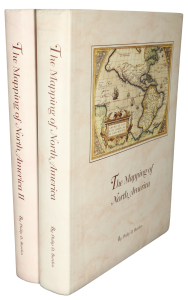Rare Maps and Prints
- World & Celestial
- North America
- West Indies, South & Central America
- British Isles
- British Isles
- English counties
- Large-scale
- Bedfordshire
- Berkshire
- Buckinghamshire
- Cambridgeshire
- Cheshire
- Cornwall
- Cumberland
- Derbyshire
- Devon
- Dorset
- Durham
- Essex
- Gloucestershire
- Hampshire
- Herefordshire
- Hertfordshire
- Huntingdonshire
- Islands
- Kent
- Lancashire
- Leicestershire
- Lincolnshire
- Middlesex
- Norfolk
- Northamptonshire
- Northumberland
- Nottinghamshire
- Oxfordshire
- Rutland
- Shropshire
- Somerset
- Staffordshire
- Suffolk
- Surrey
- Sussex
- Warwickshire
- Westmoreland
- Wiltshire
- Worcestershire
- Yorkshire
- Wales
- Scotland
- Ireland
- Western Europe
- Eastern Europe
- Middle East
- Africa
- Asia
- Australasia & Pacific
- Decorative Prints
- Title Pages
Mr. Philip D. Burden
P.O. Box 863,
Chalfont St. Giles, Bucks HP6 9HD,
UNITED KINGDOM
Tel: +44 (0) 1494 76 33 13
Email: enquiries@caburden.com
This is an example of the FIRST STATE of the map of America by the leading German map publishing firm of the eighteenth century. Johann Baptist Homann (1664-1724) began engraving and publishing separate maps around 1702, and producing standardised and composite atlases entitled ‘Neuer Atlas’ in 1707. This map would have been included in these early atlases as a necessity, as a basic compliment of a set of those on the world and continents. North America is divided into five regions: French Canada (in pink), the English Colonies (yellow), Spanish Florida (green), Spanish New Mexico (yellow), and an unclaimed area to the west including California as an island outlined in orange. A hypothetical north west coast of America extends indefinitely off the upper left corner of the map. The map is quite decorative, with two baroque cartouches. The large pictorial title cartouche at lower left displays a European addressing a large gathering of native Americans. The cartouche is flanked by two large standing figures of native Americans who appear to be watching the scene, each elaborately dressed in costumes. In the background is a landscape with a colonial town. This has been identified as being derived from that found on De Fer’s landmark map of 1699. The top cartouche is based upon De L’Isle’s 1703 map of Canada.
As one might expect from an example of the first state it is a striking impression pre-dating Homann’s privilege. I have been able to identify six states of the map. California is depicted here as an Island on the second Nicolas Sanson. The Straits of Anian are placed between California and the unknown ‘Terra Esonis’ which forms a nearly continuous land bridge from the North West to Asia, it was through here that the hoped for North West passage would be found. The Great Lakes and the Mississippi River are depicted with some accuracy for the period. Heinz, Markus (1997). ‘A Programme for Map Publishing: The Homann Firm in the Eighteenth Century’, Imago Mundi, no. 49, pp. 104-15; Leighly 133; McLaughlin 175; Tooley 79.
As one might expect from an example of the first state it is a striking impression pre-dating Homann’s privilege. I have been able to identify six states of the map. California is depicted here as an Island on the second Nicolas Sanson. The Straits of Anian are placed between California and the unknown ‘Terra Esonis’ which forms a nearly continuous land bridge from the North West to Asia, it was through here that the hoped for North West passage would be found. The Great Lakes and the Mississippi River are depicted with some accuracy for the period. Heinz, Markus (1997). ‘A Programme for Map Publishing: The Homann Firm in the Eighteenth Century’, Imago Mundi, no. 49, pp. 104-15; Leighly 133; McLaughlin 175; Tooley 79.
HOMANN, Johann Baptist
Totius Americae Septentrionalis et Meridionalis Novissima Representatio ...
Nuremberg, 1710
495 x 580 mm., early wash colour. With repaired lower centrefold split 90 mm. into the image, two small paper faults either side, otherwise a nice dark impression of the first state.
Stock number: 8798
SOLD






